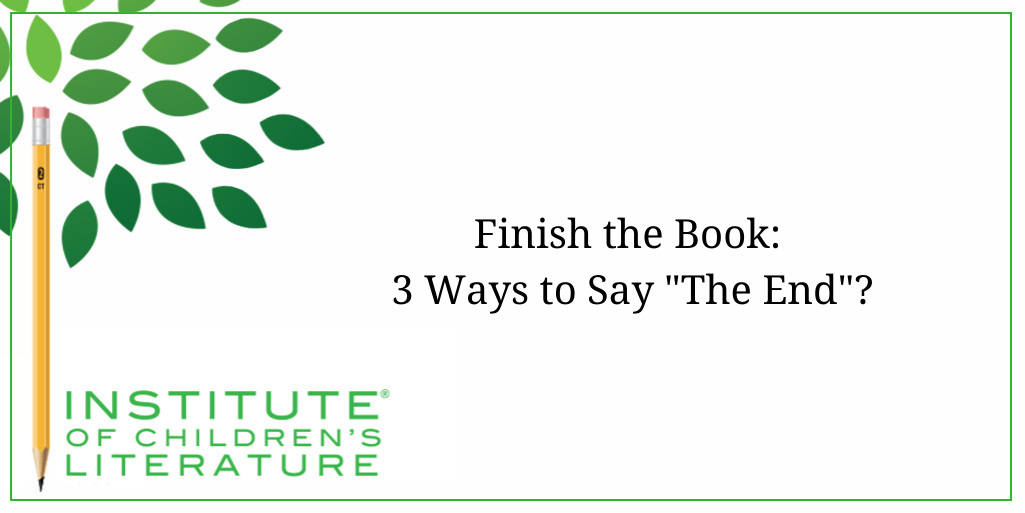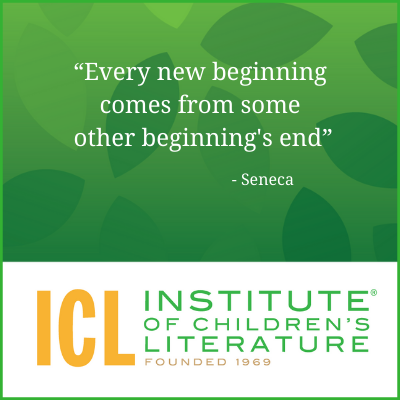
5 Ways Writers Can Prep for 2025 Goal Setting
Before we roll on to the new writing year, let’s harness our optimism for the blank slate before us and prepare for our 2025 Goal Setting just for writers.

We teach our students how to write and get published!
View our Course Catalog >
An important thing to consider as you finish your book is finding the ending that makes the best impression on the reader. This means one that lingers for the reader and leaves the reader with something to ponder, something of value. Let’s look at some examples of how different authors have pulled this off with recent books.
Sometimes the ending to a book becomes more poignant when we are reminded of the beginning of the story, the time before everything changed. That kind of ending makes the reader all the more aware of the journey they’ve taken along with these characters. For example, consider this last line from Defy the Night by Brigid Kemmerer: “But just for a moment, I close my eyes, lean into his touch, and remember what it was like when it was just the two of us against the night.” Notice also how this line not only reflects the beginning of the book but also reinforces the title of the book, making it clear that Defy the Night is an appropriate representation for this book’s journey.

Finally, let’s look at Birdie’s Billions by Edith Cohn. This book is about a single mother and her daughter. It’s also about a lot of other things including found money and bad mistakes and danger, but the heart of the book is the relationship between Birdie and her mom. The book begins with a scene between Birdie and her mom, one in which Birdie helps her mom with a chore. Things go sharply wrong just after that, but the opening of the book is very much a picture of a girl and her mother. The ending of the book focuses on another moment between Birdie and her mom and reminds us that they were, all along, the most important part of the story. Since it doesn’t spoil the story, I’ll share it here:
Birdie slid into it and grabbed Mama’s pinky with hers.
Mama smiled.
Birdie smiled, too.
And when Mama wouldn’t give Birdie’s finger back, they sank onto the couch laughing.
Much like the opening, the closing shows that despite all the adventure, danger, mistakes, and cleverness of the story, this mother and daughter are the heart and soul of the book and they’re going to stay that way. So, in some ways, the ending lines make us aware that sometimes the most important things don’t change.
Sometimes a book ends with something very like a summing up. The reader has gone on a journey with these characters and a great many things have happened to lead to this very specific point. Often this kind of “summing up” ending will give the reader a reminder of the characters who’ve helped bring the main character to this point but will stick the landing by saying exactly what is true now. An example of this kind of ending happens in The Raven Heir by Stephanie Burgis. Because the ending completely spoils the story, I won’t quote it here, but I will offer a few short bits from it. The ending reminds the reader of the characters who brought us to this point with the words “all the people she loved would help her to grow into it.” This is followed by the sentence that states both the exact situation the main character is now in and what that will mean for her future.
One thing this kind of summation nearly always does is remind the reader that the world of this story will continue to exist even after the book is done. This is true with series books but it’s also true with one-off books. Because the reader has suspended disbelief in order to enjoy the story, assuring the reader that the characters continue helps the ending feel satisfying without being sad. The reader may not read more about these characters, but somehow, they still exist all the same.
The Firebird Song by Arnée Flores displays another example of summing up in a single line what the new reality of the story is comes at the end of the book. Again, I won’t quote the ending line since it also bluntly sums up the new reality of the story, but the tone of this ending is very different from the tone of the ending in The Raven Heir by Stephanie Burgis. This is more ominous with people weeping and ashes in one of the main character’s curls. The Firebird Song ends with a very clear summary of what has gone before, seen through the eyes of a character. The character of Prewitt thinks about how he’d “started this journey” with one goal but had experienced far more events and far more change than he expected. As an excellent example of a book that really looks at the journey of the story as part of the ending, this is a good one to track down and read for yourself.
Another thing the ending of The Firebird Song includes is a kind of statement of the theme. As Prewitt thinks about the things that he’s been through on the journey of the story, he comes to a realization about friendship, which helps the reader make the connection between the story and the theme of friendship and what it means to truly have and to be a friend.
Another book that does something similar is Renée Watson’s Ways to Grow Love. This is a story that is very much about change. Change can be tough for kids because it is often associated with loss. As things around us change, the things that used to be go away and that feels like loss. So one of the things the book does is reinforce the value of memories as a way to keep change from becoming loss. The main character ends the book thinking about memories and holding onto them, and about how sometimes it’s hard to recognize something valuable in the middle of it. Here’s a quote from near the end: “Maybe this is a way to remember the little things, the things that don’t seem so special at first but then turn out to be the best thing.” And the book reinforces this part of the theme one more time in the last line: “I have so many memories I want to hold on to, so many more to make.” With this line, the author not only reinforces the theme to help the reader carry it and use it even after the book is over, but she also reminds the reader that Ryan’s story isn’t over just because the book is over.
One rather charming thing that comes at the end of some books is the addition of a gift for the reader, often in the form of a recipe. After the charming moment with Birdie and her mother in Birdie’s Billions, the book includes one such treat in the form of a recipe for Birdie’s Buckeyes. Another book with a similar addition is When I Hit the Road by Nancy J. Cavanaugh, which ends with a chocolate chip cookie recipe and tips for adding your own twist to the cookie making. A treat can be a delightful way to end a book and one I’ve used myself.
To finish your book, you need to understand the book you’ve written:
Often the answers to these questions will show you the perfect way to finish the book. And that will be a treat for you and for the readers.
With over 100 books in publication, Jan Fields writes both chapter books for children and mystery novels for adults. She’s also known for a variety of experiences teaching writing, from one session SCBWI events to lengthier Highlights Foundation workshops to these blog posts for the Institute of Children’s Literature. As a former ICL instructor, Jan enjoys equipping writers for success in whatever way she can.

Before we roll on to the new writing year, let’s harness our optimism for the blank slate before us and prepare for our 2025 Goal Setting just for writers.

Writers can be thin-skinned when it comes to getting feedback on their work. Let’s look at 4 ways to positively deal with constructive criticism!

Rejection is part of the territory when it comes to being a writer. Today we offer reflection for writers to help redirect your efforts after a rejection.
1000 N. West Street #1200, Wilmington, DE 19801
© 2024 Direct Learning Systems, Inc. All rights reserved.
1000 N. West Street #1200, Wilmington, DE 19801
© 2024 Direct Learning Systems, Inc. All rights reserved.
1000 N. West Street #1200, Wilmington, DE 19801
© 2024 Direct Learning Systems, Inc. All rights reserved.
1000 N. West Street #1200, Wilmington, DE 19801
© 2024 Direct Learning Systems, Inc. All rights reserved.

1000 N. West Street #1200, Wilmington, DE 19801
© 2025 Direct Learning Systems, Inc. All rights reserved.

1000 N. West Street #1200, Wilmington, DE 19801
©2025 Direct Learning Systems, Inc. All rights reserved. Privacy Policy.
2 Comments